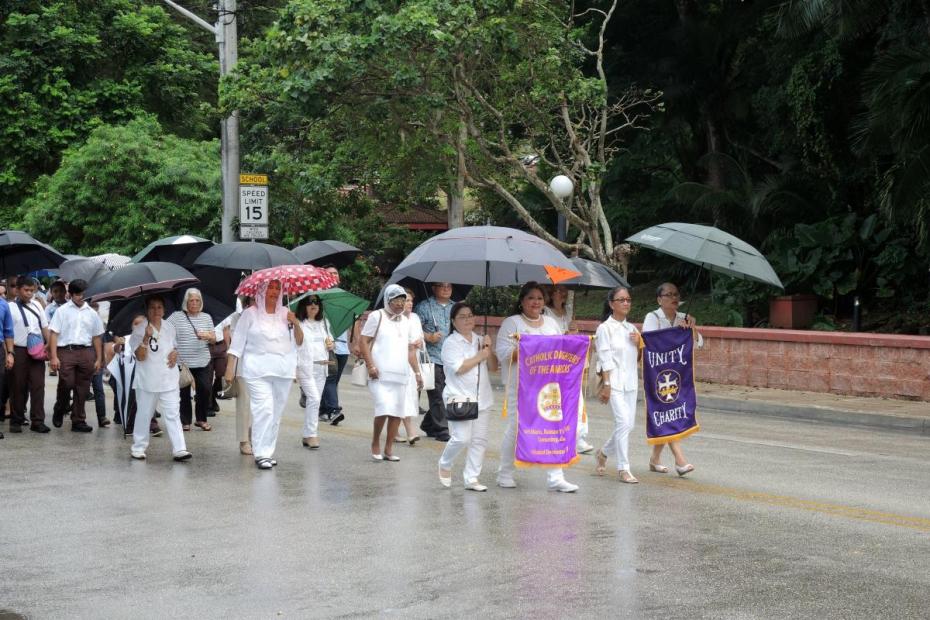Respect for elders endures as a primary cultural value for Guam’s Chamorro people. At a family event, one interviewee said, “The first thing the kids have to do before you go and find your cousins to play, you go find all the aunts and uncles and you kiss them… You have to ask for a blessing.” The ritual for offering respect to an elder is known as mangnginge. The elder offers his or her hand, and the younger person holds it up against his or her nose. Traditionally, this literally involved smelling the hand. The elder, in turn, offers a blessing. In this regard, Chamorros are much more like their Filipino neighbors, whose comparable ritual is known as the mano (or pagmamano), than like other cultures in Micronesia that have even more extensive respect hierarchies and rituals.
Pre-colonial Micronesian societies were frequently matrilineally organized, with women having ownership and control of the land, which was a family’s anchor, while men went out to fish. Guam was no exception. Spanish and American colonization upended matrilineal land tenure traditions, but some matrilineal legacies still seem to endure in religious traditions, among other ways.
A female interviewee, a prominent woman in Guamanian society, summed it up this way: “The only thing you can count on is the maternal line.... Do you know what I'm saying? Yes. That's still the core. Mom used to say, ‘You don't know who your Father is, but you know who your Mother is.’”
“The only real and sure thing,” her sister chimed in, “is when a mother says, ‘This is my child.’ Nobody questions it.”
In the religious settings, matrilineal lines are particularly important in passing down intregas, promises to fulfill some sort of devotion or religious duty that are passed on from one generation to another. In most of the accounts given in interviews, including the Torres family’s role in caring for Santa Marian Kamalen, intregas were passed down in a maternal line. The authority of the Torres women to care for the image is a role taken so seriously that “no priest messes around with it.”
Women also have a longstanding, well-defined role in leading a number of prayers. Women leaders called techas (pronounced tet-zas) lead prayer, primarily novenas, on particular occasions. On an island where Rosaries and novenas are central to the prayer life of many families, women interviewed did not regard the techas’ role as subordinate to the role of priests, just different.
Sexual sins tolerated, if discreet
Though Guam is a U.S. territory, governed by U.S. laws on issues like abortion and same-sex marriage, Guam has not fallen into the American culture wars in the same way. While abortion is still discouraged, and talked about as a sin and social ill by Catholics, interviewees said that Chamorros have no desire to emulate the culture wars. Priests talk broadly about protecting life, or about preserving the family, but modesty and discretion are also culturally important.
In a variety of different ways, interviewees suggested that Chamorros were traditionally a very sexually tolerant people, with men and women interviewees allowing that men tend to “be men,” but suggesting that the outward form is most important, so that relationships not be publicly violated.1 Several interviewees suggested that homosexuality was never a major taboo in Chamorro society, or at least was taken for granted as a part of life. Those people could come to church and be part of shared life, as long as they kept their relationships discreet and did not violate public norms.
“Before Americanization, in the 1960s, we had a few, and they tended to be effeminate, and that’s how you knew. They went to church; they didn’t live together. Some of your best [Catholics] are old time homosexual men because a lot of them tend to be very churchy. The traditional Chamorros would say that [showing your relationship in public] is ‘not in good taste. Be who you are behind closed doors.’”
Sexual sins, several indicated, are not blithely overlooked, but culturally are certainly not as bad as other sins like “taking advantage of people, enriching oneself at the expense of others, or corruption.” Another man offered a similar list of worse sins, but included at the top of the list, gratuitously “making someone else look bad.” Private, adult sexual indiscretions, on the part of laity and priest alike, would not cause the same scandal as something like embezzlement would, another said. Today, as the media regularly share stories of sexual harassment or abuse in the Church and elsewhere, those norms may well be changing, but the traditional Chamorro context provides a different context for responding to those sins than in many other cultures.
- 1Apparently in pre-colonial Chamorro lands, women had more sexual freedom than men, and the ability to end a relationship and take up with a new man without any moral judgment against them.
